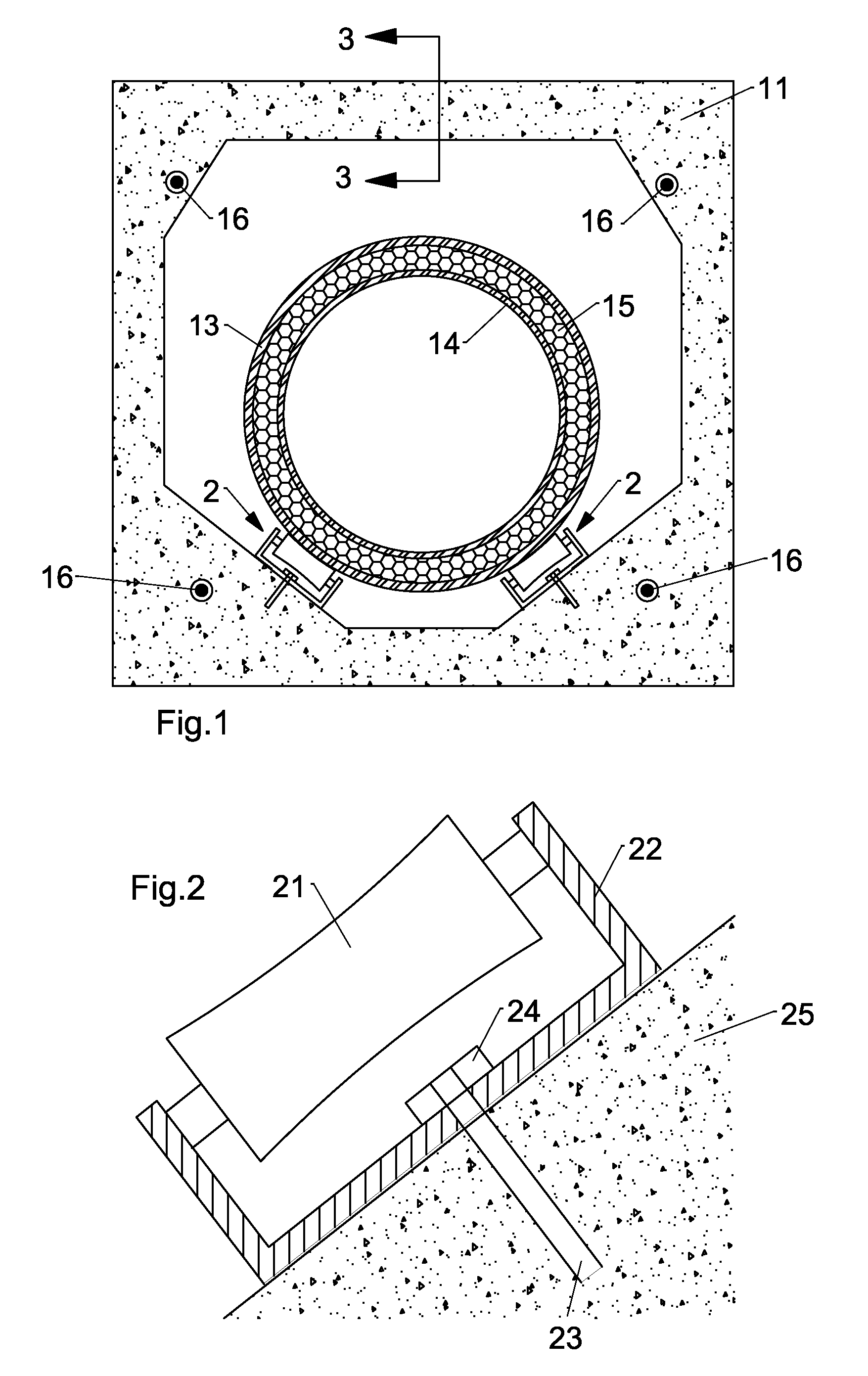Pipe-in-Pipe in RCC for Subsea Transfer of Cryogenic Fluids
- Summary
- Abstract
- Description
- Claims
- Application Information
AI Technical Summary
Benefits of technology
Problems solved by technology
Method used
Image
Examples
Embodiment Construction
[0039]1. System
[0040]A simple subsea transfer system of the present invention is illustrated in FIG. 1. The system comprises a reinforced concrete conduit (RCC) 11, double rollers 2 that sit on the bottom of RCC, and a metal casing pipe 13 supported on double rollers 2. Within metal casing pipe 13, there is an inner metal pipe 14 with insulation 15 filled in the annulus in between. Tensioner 16 is located at each corner of RCC 11 and puts in RCC 11 in compression.
[0041]Refer now to FIG. 2, a roller 21 is attached to both walls of a U-shaped support 22. The bottom of U-shaped support 22 is anchored to concrete bottom 25 by tightening nut 24 onto a pre-imbedded stud 23.
[0042]FIG. 3 shows two reinforced concrete conduits 11, each having a spigot end and socket end. Threaded bar 33 runs through reinforced concrete conduits 11 and is anchored to socket end plate 31 and spigot end plate 32. Rubber gasket ring 35 is used at each joint and provides sealing against water or debris intrusion....
PUM
 Login to View More
Login to View More Abstract
Description
Claims
Application Information
 Login to View More
Login to View More - R&D
- Intellectual Property
- Life Sciences
- Materials
- Tech Scout
- Unparalleled Data Quality
- Higher Quality Content
- 60% Fewer Hallucinations
Browse by: Latest US Patents, China's latest patents, Technical Efficacy Thesaurus, Application Domain, Technology Topic, Popular Technical Reports.
© 2025 PatSnap. All rights reserved.Legal|Privacy policy|Modern Slavery Act Transparency Statement|Sitemap|About US| Contact US: help@patsnap.com



